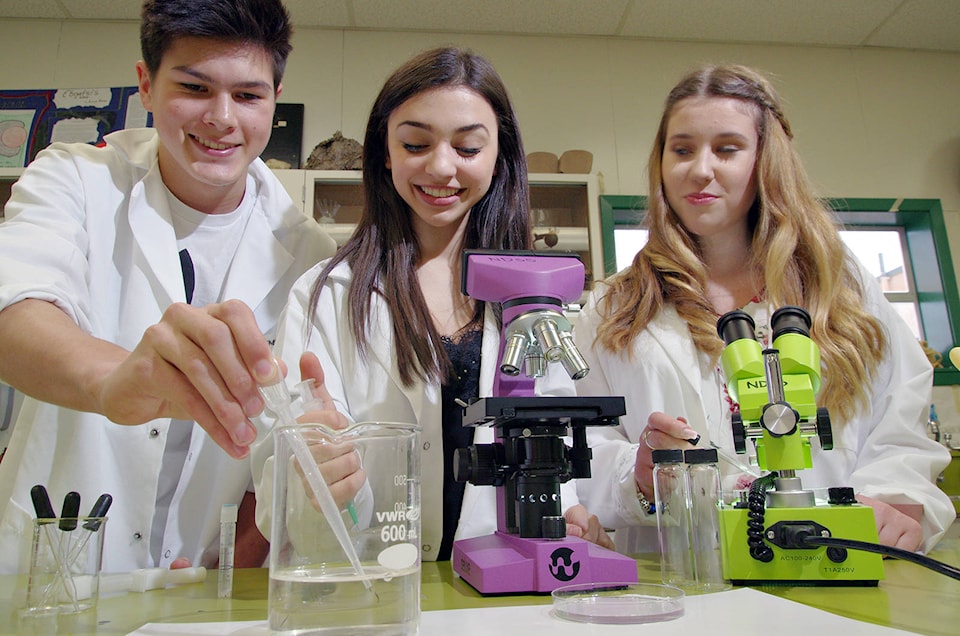There are many ways of measuring success. One of those is getting flatworms back to Earth without them having lost weight during their time spent in orbit.
Tiny flatworms have been drafted into a partnership with three Nanaimo District Secondary School Grade 11 students to do potentially history-making scientific research aboard the International Space Station.
Megan Poteryko, Parker Davie and Abigail Sitler will be the first Vancouver Island students to have an experiment launched into orbit as part of the Student Spaceflight Experiments Program and are one of only two teams selected from across Canada to be part of SSEP Mission 12, scheduled to launch in June.
Their experiment will test whether the drug, L-carnitine, could be effective against preventing muscle loss in microgravity.
“We kind of looked at one of the biggest problems threatening long-term space travel, which is muscle atrophy,” Sitler said. “Currently astronauts have to exercise two hours a day just to maintain their muscle mass and so that takes away important time from experimenting and those kinds of things, so Megan found a scientific study linking L-carnitine with inhibiting muscle atrophy, so we kind of just ran with that and created our proposal from that.”
The students are still working on the final stages of preparations for their experiment to meet strict NASA standards for such things as weight, size and even contamination risk to crew aboard the International Space Station who will activate and deactivate the experiments that will be flown to the station on the SpaceX commercial launch system, which will deliver a number of student science experiment packages from several countries in June.
The students, who have worked together on the project for several months, are excited their experiment proposal was accepted and that they will get to personally see it launched from the Kennedy Space Centre at Cape Canaveral, Fla.
“We couldn’t believe that we were selected,” Davie said. “We were all super jittery.”
The experiment itself is relatively simple. Live flatworms –planaria – will be exposed to L-carnitine while they are in orbit. The hope is the worms will have the same weight upon their return as when they were launched, which could indicate the drug, at least for this particular genus of flatworm, is effective against preventing microgravity-induced muscular atrophy.
Poteryko said the correlation between flatworms and humans is not that strong so this will be considered a preliminary experiment.
“But we’re hoping this will influence future studies,” she said.
The students will also be travelling to the Smithsonian National Air and Space Museum in Washington, D.C. in the summer to present their experiment proposals and, depending on the timing of that trip, the results of their experiments to NASA scientists and engineers at a student research conference.
Mary Anne Perkins, NDSS science teacher and SSEP community program director, said she still “can’t believe it’s happening” but she had confidence it would.
“Yes, I did, because I knew the calibre of the staff here and the students,” Perkins said. “I knew it would, but it just still seems so abstract. I think when they’re on the launch and they see it go up, that’s when it’s going to hit home.”
photos@nanaimobulletin.com
Like us on Facebook and follow us on Twitter
